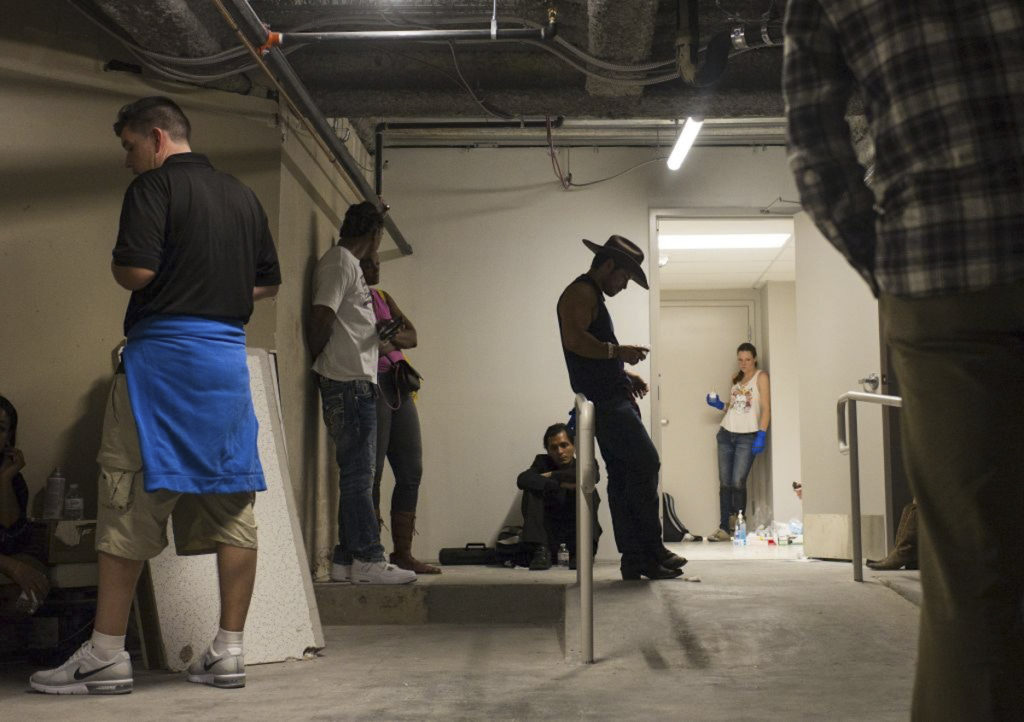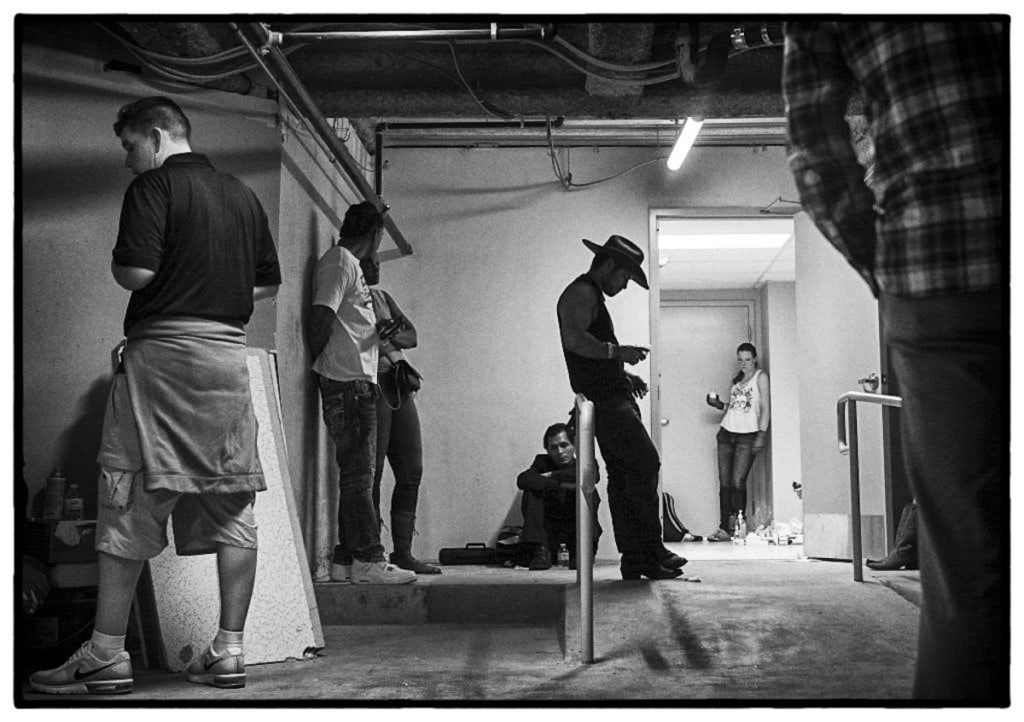Above is a photograph that immediately caught my eye among the mass of photos coming out of Las Vegas in the wake of the insanity there. It was taken by Chase Stevens, a staff photographer with the LV Review-Journal. At the risk of aestheticising other people’s misfortune, it’s a beautiful photo in its own way in addition to having documentary value. Were I to know nothing about Mr. Stevens, I’d assume he’s familiar with Frank/Friedlander/Freed/Winogrand, as the photo mirrors that aesthetic, and the use of black and white references the film era. As for its documentary value, it’s less a stand-alone photo than one in a series of photographs illustrating what happened that night, but it certainly works as one in a series. You can see the series here, along with a short article about Steven’s excellent work that night.
If you clicked through the link I’ve provided, you’re probably confused, because the photo used in the link is not the one above but rather this one:
 The Las Vegas Tropicana on lockdown on Oct. 1, 2017. Chase Stevens—Las Vegas Review-Journal/AP
The Las Vegas Tropicana on lockdown on Oct. 1, 2017. Chase Stevens—Las Vegas Review-Journal/AP
same photo, but in color and obviously digital. I prefer the b&w version; you may be indifferent or prefer the later.
The B&W version is actually my creation (apologies to Mr. Stevens). I downloaded his photo as published and ran it through Silver Efex with a B&W film emulation that specified certain tone, contrast and grain values inherent in a given film stock (in this instance I think it was Kodak Plus X, maybe my favorite B&W film of all time, unfortunately no longer manufactured). I did it because my aesthetic sense told me, the first time I saw the photo, it should a ‘B&W photo’; that what seemed to me the obvious reference back to Robert Frank’s 1955 Manhattan cowboy photo required it be B&W:
Or maybe I’m overthinking this, but I suspect not. I’m fairly certain that Mr. Stevens has some familiarity with Frank’s image, and the photo he decided to take that night owes some unconscious debt to Frank. I’m certainly not criticizing him in any way: that’s how creativity works. We learn by assimilating the work that’s come before, and if we’re good, we find a way to put our own small spin on an established aesthetic, the result being our own idiosyncratic photographic style. Creators who are truly sui generis, unique with no real creative antecedents, come along very infrequently, maybe once or twice a century in any given discipline. The painters Vincent van Gogh and Jackson Pollack come to mind, in photography HCB and Robert Frank.
*************
The larger question for me, what led me to manipulate Mr. Steven’s photo to suite my tastes, is the issue of the “objectivity” of photographs. As photographers, I assume all of us have at some point in our photographic evolution realized that the naive belief that photos objectively show “things that happened” in an unbiased way, without containing any subjective adulteration is, well, naive.
If Mr. Stevens had done what I’d done – ran his files through Silver Efex before he turned them in to his editor, would that have constituted an improper manipulation of his supposedly objective photographs that violated journalistic ethics? If so, what if, in the race to get to the scene Mr. Stevens had grabbed an old Leica loaded with Tri-X and shot his assignment with it? How would that differ, from an ethical perspective, from him shooting the scene with an M240 in RAW mode and sending the whole thing off to the editors for selection and editing? Is one more genuine, more real than the other? And if one is, what gives us the right to say so?
I’ve been thinking about these questions because I’ve been binge-watching Ken Burn’s documentary on the Viet Nam War, currently running on public television here in the States. What strikes me is the incredible aesthetic beauty of the era’s photography (as distinct from the often disturbing subject matter), most of it B&W 35mm film, a beauty that digital documentary simple is incapable of. This is the photography I cut my teeth on, so I’m biased, but my opinion is that that B&W Film documentary aesthetic, de rigeur through the late 70’s, is effective in a way that digital capture simply isn’t. Is it “more real?” No. More “objective?” No. “Better?” Yes. Of course, this claim for the relative quality of one versus the other is subjective to an extent, but I’ll argue in future posts that it has an objective basis. I may even drag a few “philosophers” into the discussion. Humor me as we proceed.


